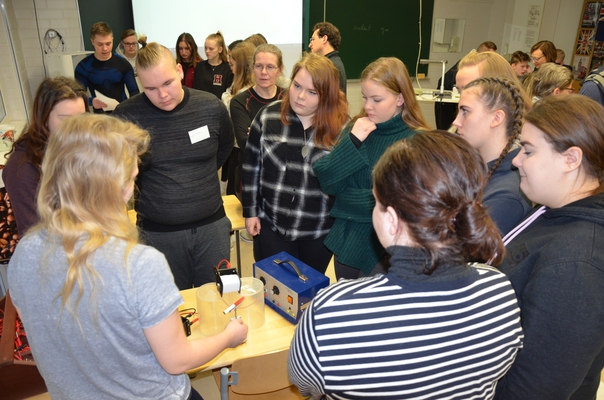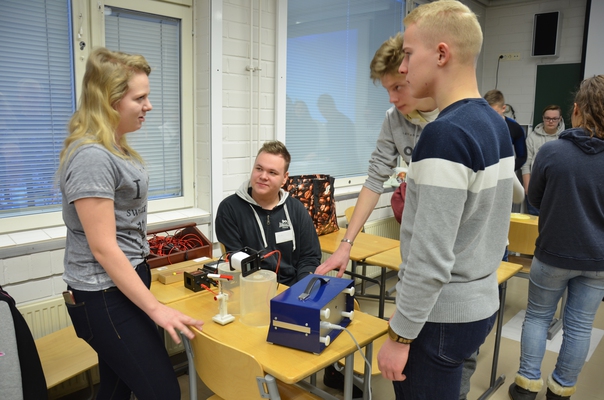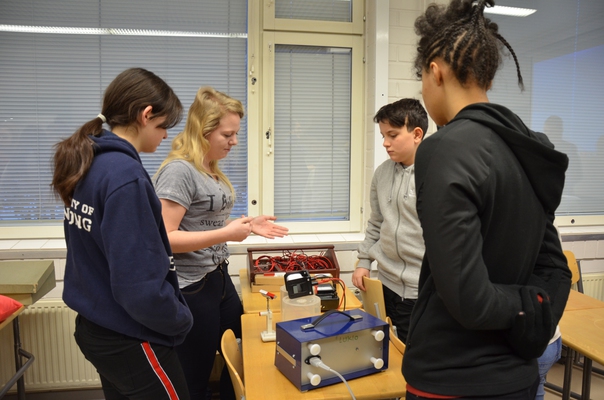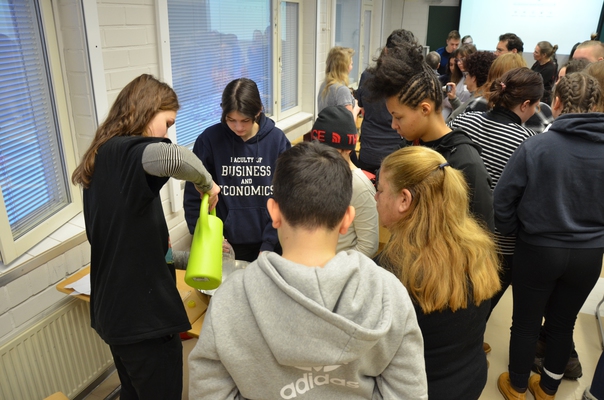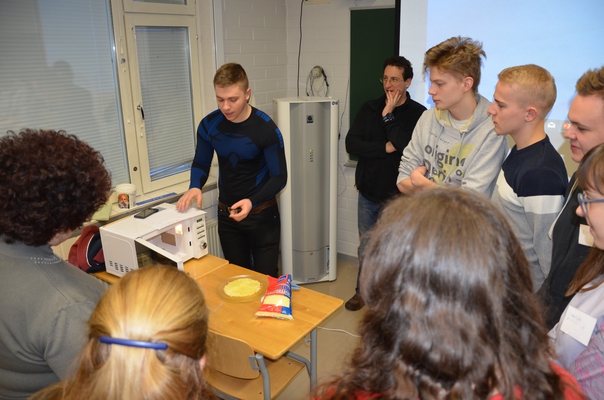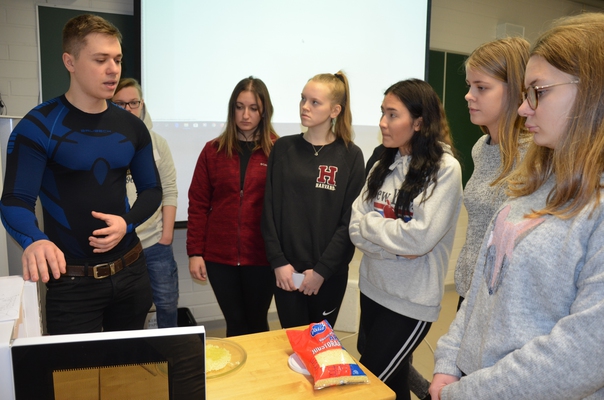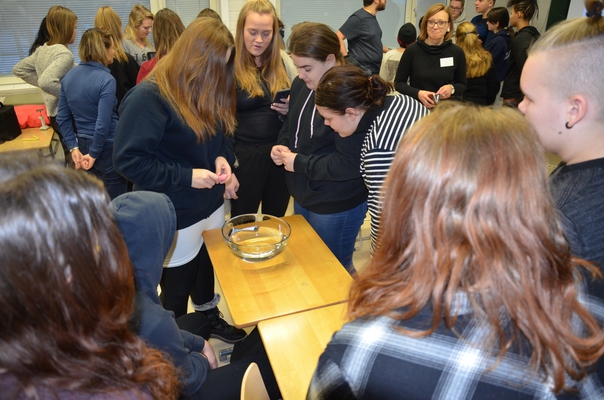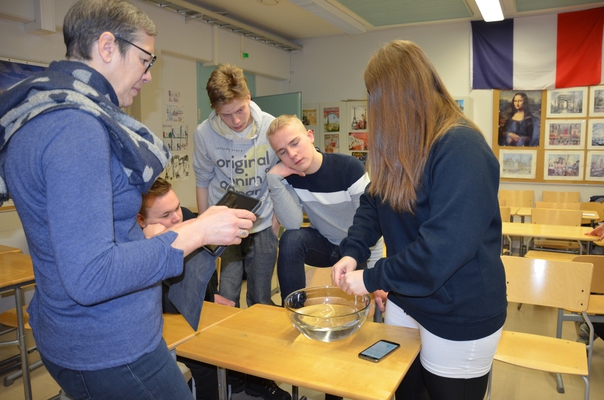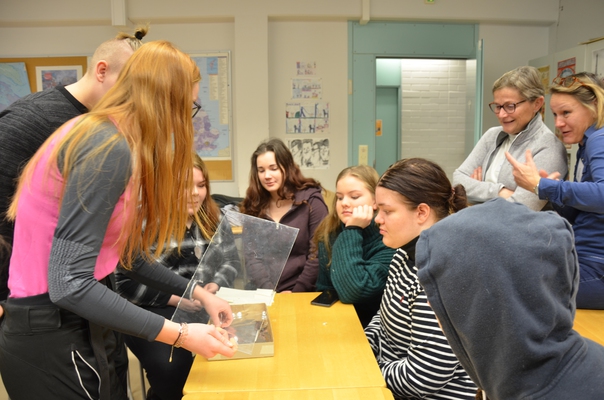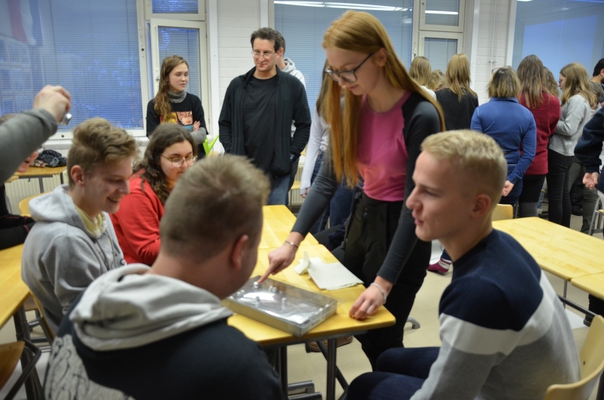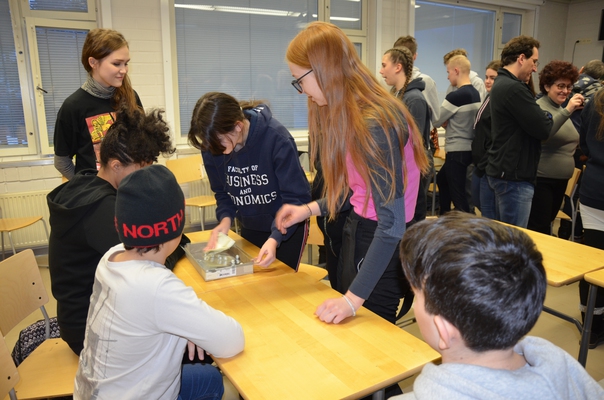PHYSICAL EXPERIMENTS
Physical experiments, prepared, carried out and demonstrated to others by participants of the project, can be divided into three categories:
1. helping to understand the operation of devices used on a daily basis
2. helping to explain physical phenomena observed in nature
3. explaining physical phenomena to junior high school students
In category 1, we have prepared experiments helping to understand the principle of operation of the induction cooker, the microwave oven and the optical fiber. We have also prepared presentations and films explaining the operation of the above devices in accordance with principles of physics, which can be used instead of showing experiments themselves and explaining the phenomena occurring in them.
INDUCTION COOKTOP
To understand the physical processes occurring in an induction cooker, we have prepared a series of experiments on electromagnetism that were designed to demonstrate the magnetic field of a coil with electric current flowing through it, the flow of induction current in a coil placed in the variable magnetic field of a moving bar magnet and the flow of eddy currents in a non-ferromagnetic metal tube in the variable magnetic field of a falling bar magnet, as well as to explain the course of the experiments based on Maxwell's laws (Faraday's and Ampere's laws) and Lenz's law.
FILM - Aleksandra Wiśniewska, class IIIC
MICROWAVE OVEN
In order to understand the principle of operation of a microwave oven, we used such an oven to show the effects of heating cheese with a standing wave and to determine the length of this wave by measuring the distance between its arrows and thus justifying that the device produces a standing wave with a wavelength in the microwave range and that it is such a wave that transfers energy to a heated dish.
PRESENTATION - Wiktor Tomczak, class IIIC
HOW DOES A MICROWAVE OVEN WORK - Wiktor Tomczak.pptx
OPTICAL FIBER
We demonstrated the principle of operation of the optical fiber by showing total internal reflection of a red laser beam in a stream of water.
PRESENTATION - Magdalena Pacek, class IIIB
Optical fiber - Magda Pacek IIIB.pptx
In category 2, we have prepared an experiment demonstrating Tyndall effect (scattering of light on particles of the dispersed phase in a colloidal suspension) occurring in a colloidal aqueous soap solution, which helps to explain the blue colour of the sky, the yellow colour of the sun shining high in the sky, the red colour of the sun just above the horizon, the blue colour of flour suspension in water or streaks of sunlight apearing between the branches of trees in the forest.
PRESENTATION - Lena Gluźniewicz, class IIIB
Tyndall's effect - Lena Gluźniewicz.pptx
In category 3, we have prepared experiments which help to understand Archimedes' law and the resulting laws of flotation, the phenomenon of surface tension, and electrification of bodies by rubbing, by contact with a charged body and by induction and also electrical interaction of charged bodies.
FLOTATION
To understand how the behaviour of a body in a liquid depends on the ratio of its density to that of the liquid, we showed that an egg sinks in tap water and floats in saltwater. To demonstrate that the buoyancy force depends on the volume of the submerged part of the body, not on its weight, we showed a the plasticine ball sinks in water, while the boat made of it floats.
PRESENTATION - ALeksandra Burno, class IE
Experiments on flotation - Ola Burno.pptx
SURFACE TENSION
In order to demonstrate the properties of a film formed on the free surface of a liquid, we showed that water can be easily poured into a bottle through a sock with little holes in it, while after turning the bottle upside down, the water does not flow out of it, even when you pierce the film, sliding a toothpick through it.
FILM - Lena Gluźniewicz, class IIIB
ELECTRIFICATION OF BODIES, INTERACTIONS OF ELECTRICALLY CHARGED BODIES
To show the phenomenon of electrification of bodies and interactions of electrically charged bodies, we demonstrated the behaviour of foam balls wrapped with aluminum foil placed on a metal foil lining a box covered with an electrically charged Plexiglas plate or on the Plexiglas plate.
FILM - Magdalena Pacek, class IIIB
The experiments were presented in our school to other project participants and lower secondary school students during the Open Day.
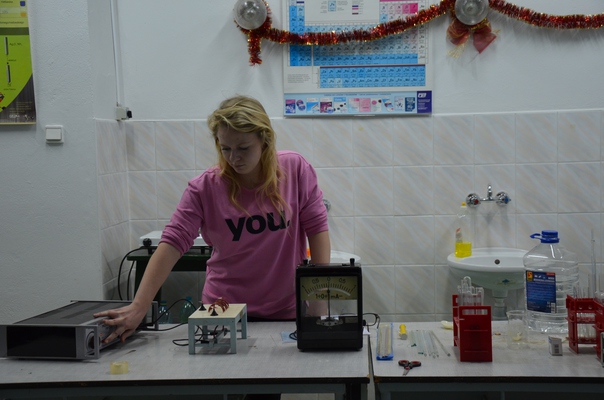
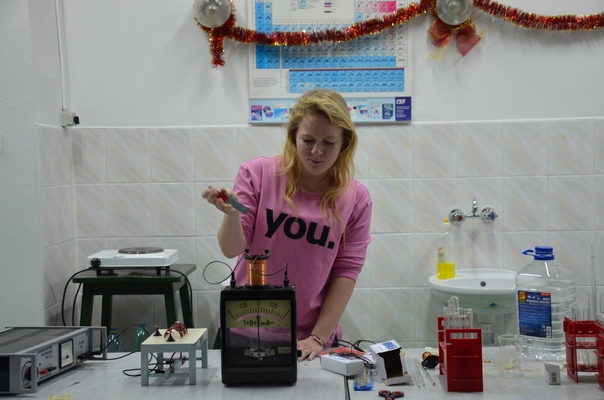
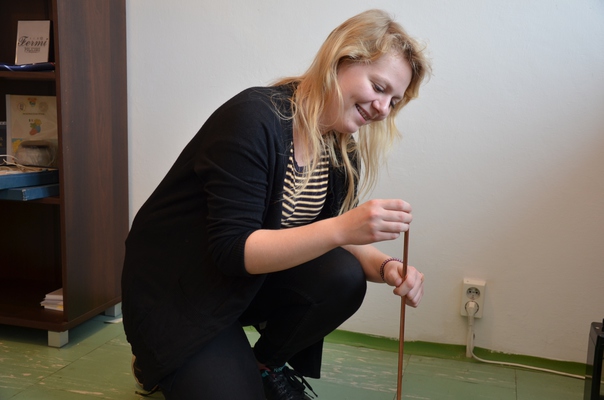
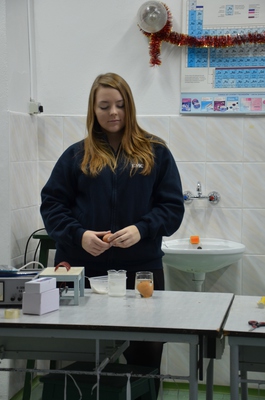
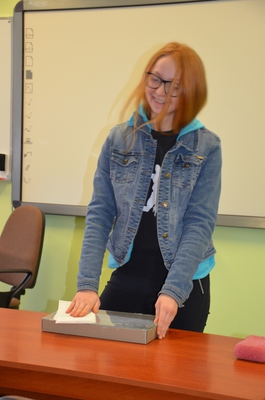
They were also presented during the project meeting in Haapavesi, Finland.
